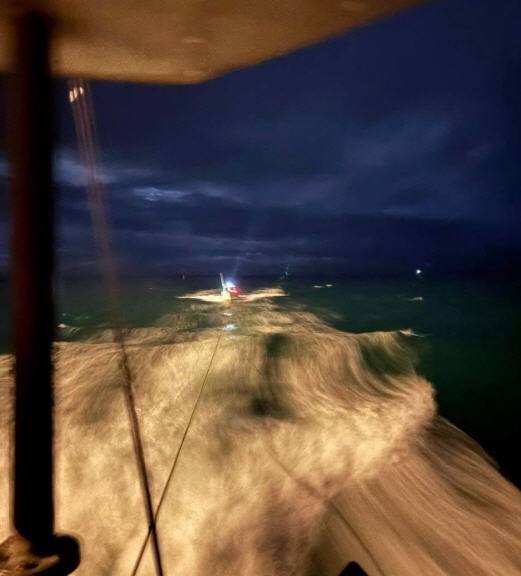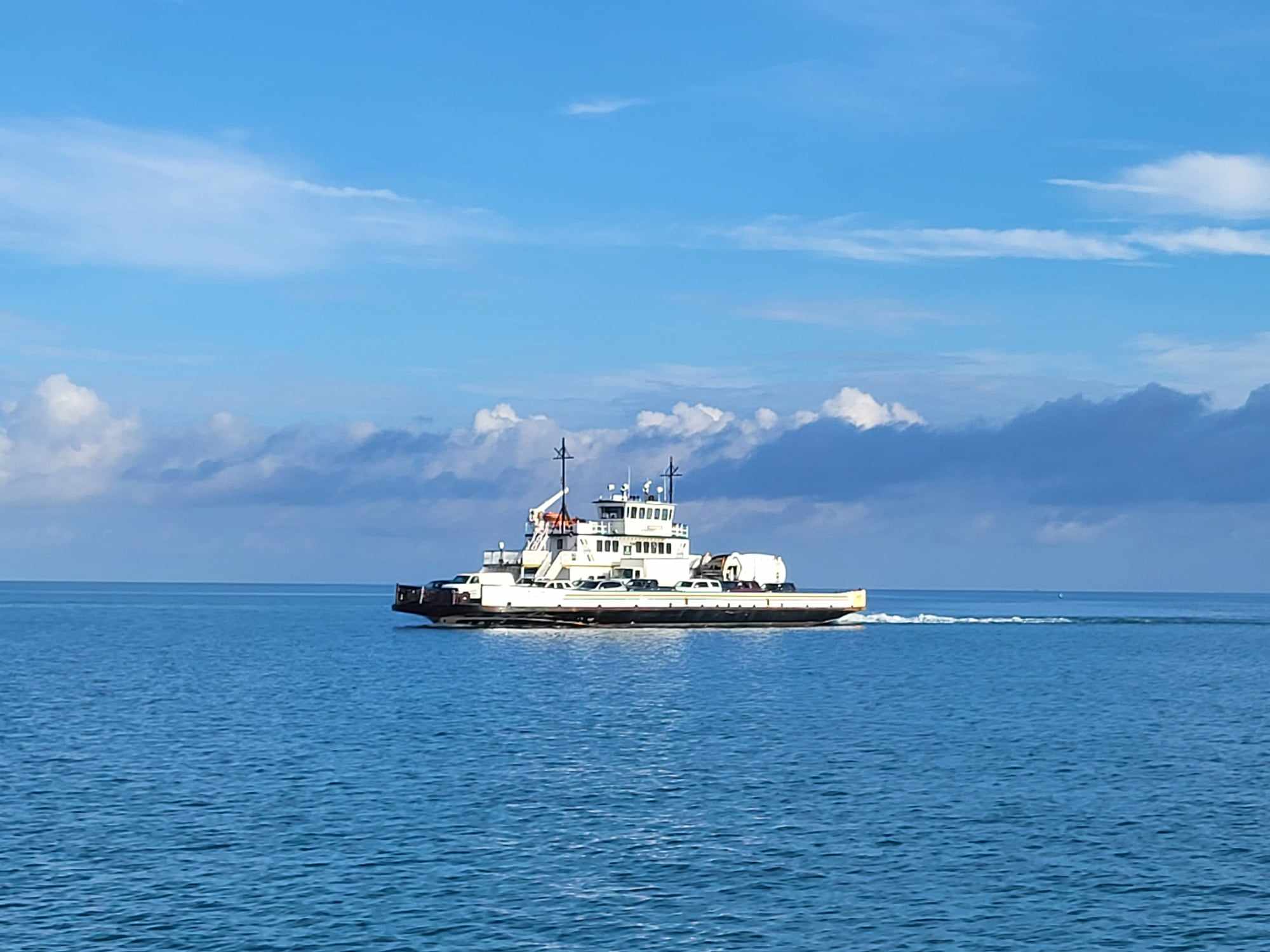Environmental groups want Cape Hatteras included in loggerhead critical habitat
As the residents of the Core Banks and the Crystal Coast are up in arms about a proposed federal rule that could put additional regulations on their beaches to protect sea turtles, regulators are considering whether the area for the threatened species should be expanded to Cape Hatteras.
Included in its 19-page comments to the U.S. Fish and Wildlife Service on the proposed designation, the Southern Environmental Law Center, submitted on behalf of itself and 13 environmental groups, requested that beaches on Cape Hatteras National Seashore be designated critical habitat for loggerhead sea turtles, mostly because its high numbers of males would counter expected impacts from climate change.
“While North Carolina has relatively low nesting density compared to more southern beaches, it plays an important role in producing males for the population,” an attorney for the Chapel Hill-based group wrote. “Because of its position at the northern extent of the range, we further note that its importance may be expected to increase in the face of global warming.”
Listed as threatened under the federal Endangered Species Act, sea turtles are already a highly managed species in the national seashore, which also encompasses Pea Island National Wildlife Refuge on the northern end of Hatteras Island. Beach driving has been curtailed at night, when nesting turtles can get confused by headlights, and nests are protected from human activities and predatory animals.
The proposed critical habitat designation, required under the ESA, determines areas that are essential to the conservation of the species. The U.S. Fish and Wildlife Service has the responsibility to create regulations for protected species, but the National Park Service manages ESA programs within the seashore.
Critical habitat for wintering piping plover in the seashore was the subject of numerous lawsuits, starting with action filed in 1996 by Defenders of Wildlife – one of the groups represented in SELC’s turtle comments — against the Wildlife Service, forcing the agency to publish a rule. That was followed by lawsuits by Dare and Hyde counties and a coalition of recreational beach access groups against the Wildlife Service. A revised final rule was implemented in 2008 with little fanfare.
Similarly, environmental groups have taken legal action against the Wildlife Service over sea turtle critical habitat designation.
Published in March, the proposed critical habitat rule for sea turtles does not currently include any area north of Bogue Banks, but the SELC’s comments must be considered as part of the review process. Officials will accept comments on the proposal through Sept.16. Staff recommendations will be issued this winter, and the final rule is expected to be implemented by summer 2014.
Pete Benjamin, the field supervisor at the Fish and Wildlife’s ecological field office in Raleigh, said that all of the few thousand comments must be reviewed after the comment period closes. If there are any additions to the proposed designated area, he said, it is likely that more public hearings would be held.
At public meetings held in Charleston, S.C, Wilmington, N.C., and Morehead City, most of the speakers’ comments were opposed to the designation, according to a Fish and Wildlife press release.
“All the comments get the same weight,” Benjamin said. “We’re not going to give one group more standing in the process just because they’ve sued us.”
On the heels of a prolonged legal battle with SELC over off-road vehicle driving in the seashore, and an ongoing one with the environmental group over the project to replace the Oregon Inlet bridge, Outer Bankers are weary –and leery – of any additional environmental regulations.
“Quite honestly, they don’t have a very good track record with the people,” Warren Judge, chairman of the Dare County Board of Commissioners said of Fish and Wildlife. “It is absolute overreach. It is using the emotion of protecting a turtle . . . We don’t think the science warrants it.”
But it’s a different situation on the state’s southern beaches, which are located mostly in municipal areas that are not already federally managed as they are in the seashore.
According to a presentation compiled by Greg “Rudi” Rudolph for the Shore Protection Office in Carteret County, the proposed critical habitat in North Carolina is located in Brunswick, Carteret, New Hanover, Onslow, and Pender counties, including all of Bogue Banks, totaling 96 miles. The entire 739-mile proposed designation also includes beaches in Mississippi, Alabama, Florida, Georgia, and South Carolina.
Although the communities take care to not harm sea turtles, including participation in active turtle monitoring networks, Rudolph said, the concern is the part of the regulation that requires review whenever there is a federal action taken in turtle habitat. That could include, according to Rudolph, U.S Army Corps of Engineers projects like beach nourishment and sandbag construction, rebuilding after a storm when the Federal Emergency Management Agency is involved, processing of claims under the National Flood Insurance Program, and any program that depends on federal grants and appropriations.
The Wildlife Service, Rudolph wrote, “clearly states they consider coastal development, recreation, shore protection, and beach driving as a threat and anything . . . will be scrutinized. New federal actions pertaining to this could be forthcoming.”
Rudolph said that it’s unclear what the impact of a rule, or associated lawsuits, could be on local and state ordinances on building, lighting, recreation, and ORV.
“It could go a thousand different directions,” he said. “Most of them bad.”
But Benjamin said that, unlike an ESA listing, critical habitat designation is obligated to take into account the economic impact. Also, the only time it comes into play is when a federal action is taken – conducted, funded or permitted — which would be limited outside of U.S. parks and refuges.
“Currently, beaches are non-federal properties – they’re not regulated by the federal government,” he said. “Critical habitat will not affect those activities. The things that could come into play are things like beach nourishment. There would have to be a little more review. That additional review is very minor.”
Most likely, he said, it would involve little more than some extra paperwork.
Part of the problem, Benjamin concedes, is that the rule itself is written in a very bureaucratic, dry manner. It starts with all the ways the turtles are threatened and all of the reasons, from lighting to fishing to poaching. So even before readers get to the meat of the rule, he said, they’re thinking that everything they like to do on the beach will be regulated.
“By the time they get to page 70,” he said, “most of them have already written their congressman.”
Another proposed critical habitat rule for sea turtles that covers the water off North Carolina is about to start the review process.
The refrain that is repeated at public meetings and in press releases by the Wildlife Service is that the critical habitat designation is simply another layer of regulation — it does not set up a refuge or affect activities on private land unless federal funding or permitting is involved. It then requires the federal agencies to consult with the Service before taking any action – which has to be done already with any species protected under the ESA.
Benjamin said that the proposed designation did not include Cape Lookout or Cape Hatteras because they do not meet the criteria of being high-density nesting beaches.
The sex of a loggerhead is determined by the temperature, with cold producing more males. Many more females are born in Florida, for instance, than North Carolina, which has many more males. But it is also the northern end of the turtle’s range and has far fewer turtles, and consequently, nests.
“Those range limits are important,” Benjamin said. “You can’t just protect the middle. But where do you draw the line? We’ve got comments going both ways.”
Dennis Stewart, refuge biologist in Pea Island National Wildlife Refuge, said that people’s fears about the designation are unfounded, especially as they relate to Cape Hatteras.
Stewart said that the wintering piping plover critical habitat designation on the north end of the refuge has had no effect whatsoever.
“As far as the federal land, it won’t change anything they do as far as sea turtle protection,” he said. “It won’t change how we do business at all.”
FOR MORE INFORMATION
To read the U.S. Fish and Wildlife Service proposal for critical habitat for loggerhead sea turtles and for information about making public comments, go to:https://www.federalregister.gov/articles/2013/07/18/2013-17205/endangered-and-threatened-wildlife-and-plants-designation-of-critical-habitat-for-the-northwest
The last day for public comment is Sept. 16.











